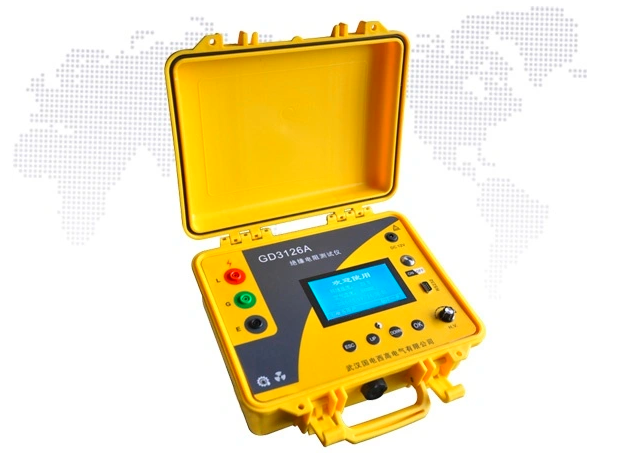Precautions for operating the high voltage insulation resistance tester:  HV HIPOT GD3126A/GD3126B Intelligent Insulation Resistance Tester 1. Work on de-energized circuits as much as possible. Use proper lockout/tagout procedures. If these procedures are not performed or not performed, the circuit is assumed to be powered. 2. Never connect an insulation resistance tester to energized conductors or energized equipment, and always follow the manufacturer’s recommendations. 3. Use protective equipment. Use insulated tools, wear flame retardant clothing, safety glasses and insulating gloves, remove watches or other jewelry, and stand on insulating mats. 4. Turn off the equipment to be tested by opening fuses, switches and circuit breakers. 5. Discharge the conductor capacitance before and after the insulation resistance tester test. Some instruments may have an automatic discharge function. 6. Disconnect branch conductors, ground conductors, ground conductors and all other equipment from the equipment under test. 7. Do not use the insulation resistance meter in hazardous or explosive environments, as the instrument will generate arcs where the insulation is damaged. 8. Check for leakage current through fuses, switches and circuit breakers on de-energized circuits. Leakage current can cause inconsistent and erroneous readings. 9. When connecting the test leads, please use insulating rubber gloves. To sum up, what should be paid attention to when using the insulation resistance tester. When conducting power tests, everyone should pay attention to safety, and use the insulation resistance meter correctly according to the specifications to ensure the smooth progress of the test.
HV HIPOT GD3126A/GD3126B Intelligent Insulation Resistance Tester 1. Work on de-energized circuits as much as possible. Use proper lockout/tagout procedures. If these procedures are not performed or not performed, the circuit is assumed to be powered. 2. Never connect an insulation resistance tester to energized conductors or energized equipment, and always follow the manufacturer’s recommendations. 3. Use protective equipment. Use insulated tools, wear flame retardant clothing, safety glasses and insulating gloves, remove watches or other jewelry, and stand on insulating mats. 4. Turn off the equipment to be tested by opening fuses, switches and circuit breakers. 5. Discharge the conductor capacitance before and after the insulation resistance tester test. Some instruments may have an automatic discharge function. 6. Disconnect branch conductors, ground conductors, ground conductors and all other equipment from the equipment under test. 7. Do not use the insulation resistance meter in hazardous or explosive environments, as the instrument will generate arcs where the insulation is damaged. 8. Check for leakage current through fuses, switches and circuit breakers on de-energized circuits. Leakage current can cause inconsistent and erroneous readings. 9. When connecting the test leads, please use insulating rubber gloves. To sum up, what should be paid attention to when using the insulation resistance tester. When conducting power tests, everyone should pay attention to safety, and use the insulation resistance meter correctly according to the specifications to ensure the smooth progress of the test.
Post time: Apr-25-2022
